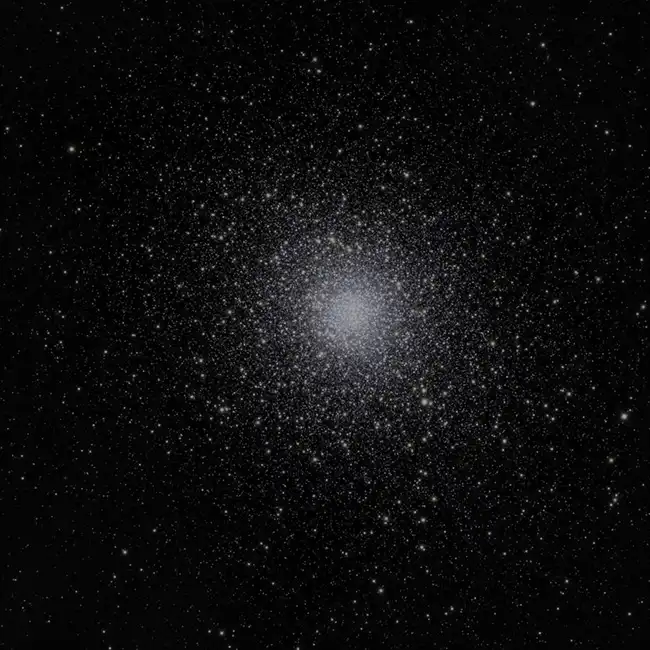Messier 5, often abbreviated as M5, is a stunning globular cluster located in the constellation Serpens. It is one of the oldest globular clusters known, with an estimated age of around 13 billion years. This cluster contains hundreds of thousands of stars packed into a relatively small region of space, making it one of the most visually impressive objects to observe through a telescope. The cluster spans about 165 light-years in diameter, which contributes to its dense appearance.
Magnitude
M5 has an apparent magnitude of 5.65, which means it is faintly visible to the naked eye under very dark skies, but it is best observed with binoculars or a telescope. Through a telescope, especially with medium to high magnification, the individual stars in the cluster become distinguishable, creating a breathtaking sight of a "star cloud."

Season of Prominence
Messier 5 is most prominent in the night sky during the late spring and early summer months. The best time to observe M5 is between May and July when it is highest in the sky during the evening hours. This period offers optimal viewing conditions as the cluster is less affected by the horizon's atmospheric turbulence.
Constellation and Location
M5 resides in the constellation Serpens, specifically in the Serpens Caput (the Serpent's Head) region. Serpens is a unique constellation as it is divided into two distinct parts: Serpens Caput and Serpens Cauda (the Serpent's Tail), with the constellation Ophiuchus lying between them.
How to Find Messier 5
To locate M5, first, identify the bright star Arcturus in the constellation Boötes. From Arcturus, move your telescope southwest toward the constellation Serpens Caput. M5 is situated about 7 degrees northwest of the bright star Unukalhai (Alpha Serpentis), the alpha star of Serpens Caput. With a telescope, start with a low magnification to find the cluster as a faint smudge of light, then increase magnification to resolve more details and individual stars.

History
Messier 5 was first discovered by the German astronomer Gottfried Kirch on May 5, 1702, while he was observing a comet. However, it was Charles Messier who cataloged it as M5 in 1764, mistaking it for a nebula without any stars. Later, in 1791, the astronomer William Herschel resolved it into individual stars, revealing its true nature as a globular cluster.
M5 is also known for its scientific importance. It has been studied extensively due to its large population of variable stars, particularly RR Lyrae variables, which are used as standard candles in determining astronomical distances. The cluster's advanced age and low metallicity make it a valuable object for studying the early stages of the Milky Way's formation.
Conclusion
Messier 5 is a fascinating globular cluster that offers a glimpse into the early universe. Its impressive size, age, and dense star population make it a rewarding target for amateur astronomers, especially during its season of prominence in the spring and summer months. Whether you are scanning the skies with a pair of binoculars or observing through a more powerful telescope, M5 is sure to provide an unforgettable stargazing experience.
